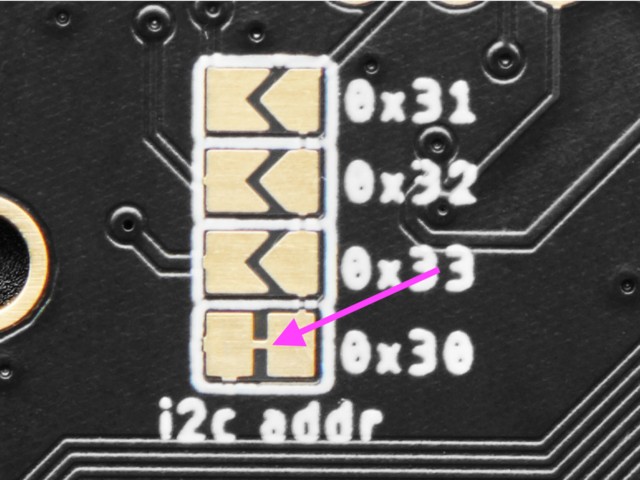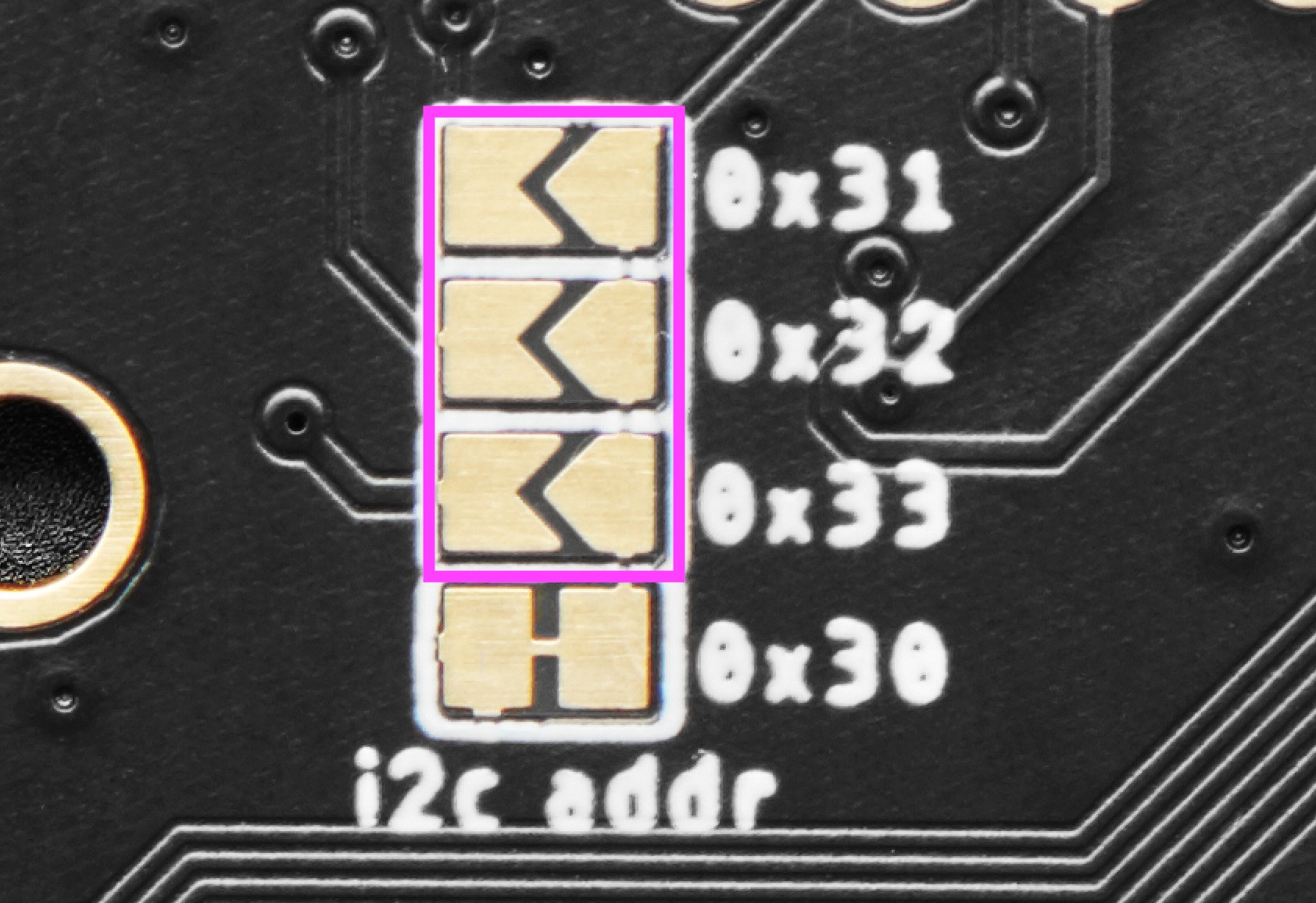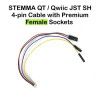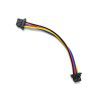Add a splash of RGB LEDs to a project you're working on, with this adorable 13x9 RGB LED matrix breakout. It features -- no surprise -- 117 RGB LEDs, each one 2x2mm in size, in a 13x9 grid with 3mm pitch spacing.
.jpg )
These are not NeoPixel or DotStar or other 'smart' RGB LEDs. Instead of having a lil chip in each LED, there's one large controller chip that handles all the PWM for you. The ISSI IS32FL3741 communicates over I2C and can set each LED element with 8 bit PWM for 24-bit color across the RGB elements, for beautiful color! There's an adjustable current driver so you can brighten or dim the whole display without losing color resolution.
Each assembled board comes with the grid, four mounting holes, and the IS31FL3741 chip with all supporting circuitry. The board can run from 3.3 to 5V DC power and logic - powering from 5V is recommended since the green and blue LEDs look better with the extra headroom. Since its a multiplexed matrix with one cathode on at a time, and each cathode driver can sink about 40mA max, that is the max current draw you can expect from the matrix. We use ultra-bright LEDs so even at ~4mA per multiplexed LED they are nice and bright!
We designed the PCB so you can tile the boards side-to-side if you desire, you'll just have to cut/solder the jumpers on the bottom to change the I2C address: Up to 4 boards can share one I2C bus.
Use Arduino or CircuitPython/Python to quickly set pixels to any color you desire. Note that I2C makes this board very easy to wire up but that also makes the display slower because each pixel must be written over I2C. For a small display with simple animations, its fine - but if you want to do video or larger graphics we recommend upgrading to the HUB75 style.
We made it easy for you to get some color right into your next project. The LED matrix and circuitry is soldered onto a custom-made PCB with two STEMMA QT connectors on the top, and are compatible with the SparkFun Qwiic I2C connectors. This allows you to make solderless connections between your development board and the IS31FL3741 or to chain it with a wide range of other sensors and accessories using a compatible cable.
To know more about STEMMA QT, watch this video:
Pinouts:
.jpg )
.jpg )
- Power Pins
The chip on the breakout requires between a 2.7V and 5.5V, and can be easily used with most microcontrollers, such as an Arduino or a Feather.- VIN - This is the power pin. To power the board, give it the same power as the logic level of your microcontroller - e.g. for a 5V micro like Arduino, use 5V, or for a Feather use 3.3V.
- GND - This is common ground for power and logic.
- I2C Pins
Default address is 0x30.- SCL - This is the I2C clock pin, connect to your microcontroller's I2C clock line. There's a 10K pullup on this pin.
- SDA - This is the I2C data pin, connect to your microcontroller's I2C data line. There's a 10K pullup on this pin.
- STEMMA QT - These connectors allow you to connect to development boards with STEMMA QT connectors, or to other things, with various associated accessories.
- Other Pins
- EN - This is the shutdown pin.
- ADDR - This is the address pin. It is connected to GND by default. Connect this pin to one of three other pins (VCC, SCL, SDA) to change the I2C address. See below for more details.
- INT - This is the interrupt pin. This pin is active low when the interrupt event happens.
- Address Pin and Jumpers
The default I2C address is 0x30. The address pin is connected to ground by default. You can connect the address pin to one of three other pins to change the address, allowing for up to four boards to be connected on the same I2C bus.
To change the I2C address, you must follow the steps below.- First, cut the bottom jumper on the back of the board (indicated by the arrow in the image). Use a hobby knife to cut the connection between the two pads.

Solder ONE of the other three sets of jumper pads (highlighted in the image) to change the address. Solder only one at a time. The addresses are listed on the back of the board next to each jumper. Here are the details:

- The top jumper changes the address to 0x31. It connects the ADDR pin to SCL.
- The second jumper changes the address to 0x32. It connects the ADDR pin to SDA.
- The third jumper changes the address to 0x33. It connects the ADDR pin to VCC.
 International
International Singapore
Singapore Malaysia
Malaysia Thailand
Thailand Vietnam
Vietnam
-800x800.jpg)
-100x100.jpg)
-100x100.jpg)
-100x100.jpg)
-100x100.jpg)


.jpg )
.jpg )
.jpg )


.jpg )